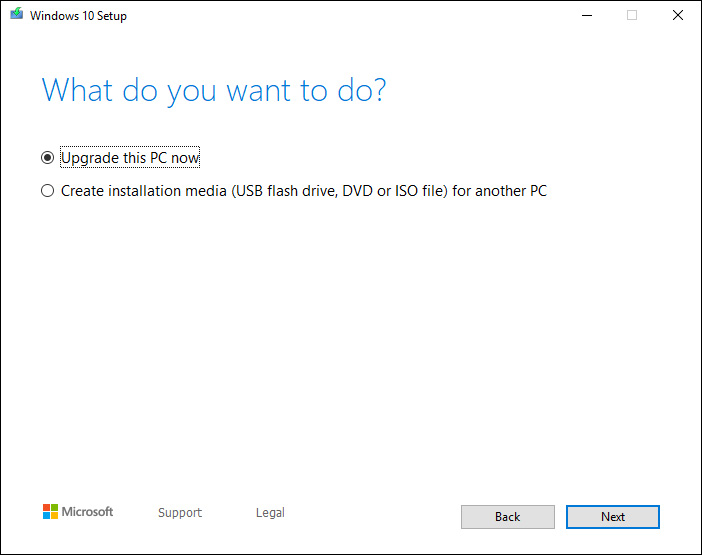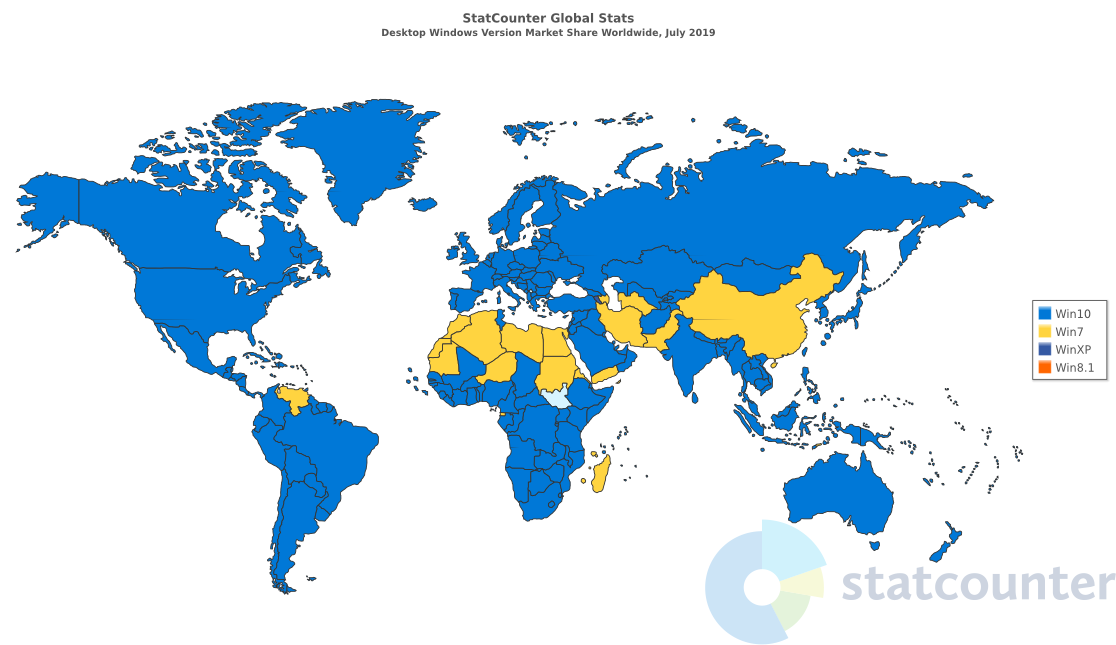
Why do I need Windows 10 anyway?
Written by Mat
A third of the world still loves Windows 7
Tech company Spiceworks released their latest report into the state of the IT industry on Tuesday. Two facts that really grabbed me were that, among the organisations surveyed:
- 79% still have at least one PC running Windows 7
- 32% still have at least one PC running Windows XP
Statcounter reports that Windows 7 usage at around 31% of all PC, and Windows XP on about 3%.
This graph shows which version of Windows is dominant in each country of the world:
The Windows 7 clock is ticking
If you've still got a Windows 7 computer in your office or home, mark this date in your calendar: 14th January 2020 (it's a Tuesday). That's the date when Microsoft will officially stop supporting your computer and will stop releasing security updates. They did the same thing for Windows XP back on 8th April 2014 (also a Tuesday! There's a pattern emerging).
A lot of people didn't like Windows 10 when it came out. So many, in fact, that Microsoft offered everyone with Windows 7 and 8 a free upgrade to Windows 10 until 29th July 2016 (sadly this was a Friday). Despite this, the number of PCs with Windows 10 only passed the number with Windows 7 in January this year according to Net Market Share.
So it looks like an awful lot of people didn't get around to using their free upgrade, and are now facing a wild and exciting life of unsupported PC ownership come next January.
That sounds wild and exciting!
But why is running an unsupported version of Windows so bad? Let's look at a few examples.
In May 2017 the WannaCry ransomware swept across the world. It didn't affect Windows 10 at all, and Microsoft had already issued patches for Windows 7 computers, but because of the end of support for Windows XP in 2014, these PCs were vulnerable to attack, "with total damages ranging from hundreds of millions to billions of dollars" according to Wikipedia.
This is what users saw instead of all their lovely files:

In this case, the attack was so severe that Microsoft took the unprecedented step of issuing a patch for XP. Don't count on that happening every time there's a new security threat. It's also worth noting that XP users had to manually install the patch, it wasn't automatically fixed.
After Windows XP support ended, Microsoft continued to issue patches for security holes in Windows 7 as you'd expect. However, resourceful hackers were able to look at what problems these patches fixed, and then figure out how to take advantage of these same problems in Windows XP. At the time of writing, there are currently 50 unpublished security vulnerabilities affecting Windows (all versions) on the Zero Day Initiative website. If even a fraction of these don't get fixed before next January, they could be the next WannaCry for Windows 7 users.
Okay, you've convinced me. Can I still upgrade for free?
Not officially. According to Microsoft the only way to upgrade to Windows 10 now is to pay for it.
Unofficially, many people have found that they can still run the upgrade tools as long as they have a legit Windows 7 licence. See this article for details, but it doesn't seem to work for all users, and we wouldn't recommend it.

In summary
The two best things you can do to avoid a digital catastrophe are setting up regular, automated backups (which we'll be covering soon!) and keeping your computer patched. If you're running Windows 7, the second part isn't going to be an option after January next year. So get on with it and either upgrade your computer to Windows 10, or buy a new Windows 10 machine.
Don't say we didn't warn you!
Tagged under: Bluffers guide Hot topics Security Malware Software
